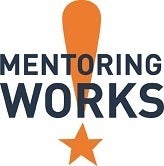Harvard Chan’s Center for Health Communication was founded by Jay A. Winsten in 1985. It was the first such health communication program at an academic institution.
Under Winsten’s more than three decades of leadership the center
-
- Created the first mid-career fellowship program for journalists who cover public health and medicine
- Offered courses and seminars on health communication
- Convened researchers and practitioners to examine how strategic communication can influence public policy, social norms, and individual behavior
- Tested strategies to harness the power of mass communication to advance the public’s health, leveraging broadcast TV, advertising placements, and other tactics to promote healthy behavior
- Published recommendations for the design and conduct of local and national media campaigns to advance the public’s health

1988-1994: Designated Driver Campaign
From 1988-1994, the Center for Health Communication mobilized all the major Hollywood studios and television networks in a landmark, prime-time media campaign that changed American culture by achieving widespread awareness, acceptance, and usage of the “designated driver” concept, thereby contributing to a 25% decline in annual alcohol-related traffic fatalities. A 2002 report from the Henry J. Kaiser Family Foundation noted that the campaign “is widely considered to be the first successful effort to partner with the Hollywood community to promote health messages in prime-time programming.” In 1994, the Chronicle of Philanthropy reported, “Many grant makers say it was the success of the [designated driver] campaign that persuaded them that skillful work with news and entertainment media can bring about social change.”
1994-1997: Squash It! Campaign to Prevent Youth Violence
From 1994-1997, the Center for Health Communication conducted a national campaign — Squash It! — to curb violence among urban youth by recruiting leading rap-music artists and sports figures to promote a social norm that says, “Sometimes, by walking away from a confrontation, you can prove yourself to be the bigger person.” Partners included leading television networks, Hollywood studios, National Football League (NFL), National Basketball Association (NBA), and National Collegiate Athletics Association (NCAA). Survey data revealed a positive shift over three years in acceptance of the walk-away message among key target groups. In a parallel initiative, the center convened a series of invitational forums to mobilize the support of policy makers for expansion of evidence-based youth programs offering positive alternatives to violence. Based in part on findings from the forums, which featured extensive input from young people as well as policy experts, the center developed a national media campaign to recruit large numbers of volunteer mentors to help young people achieve their full potential.

1997-2015: Harvard Mentoring Project
From 1997-2015, the Center for Health Communication spearheaded the Harvard Mentoring Project, a national media campaign to recruit volunteer mentors for young people from underprivileged backgrounds. Conducted in collaboration with MENTOR: National Mentoring Partnership, with media support provided by Hollywood studios and television networks, the campaign is credited with helping to greatly expand the annual number of young people receiving the benefits of formal mentoring programs from 300,000 in 1997 to 3.5 million in 2015.

2007: Harvard Tobacco Project
In 2007, Dean Barry Bloom and the Center for Health Communication joined forces to tackle Hollywood’s depiction of tobacco smoking and its adverse influence on initiation of smoking by young people. Building on the work of other advocates, the Harvard Tobacco Project proved successful in persuading the Motion Picture Association of America (MPAA), which represented all Hollywood studios, to change its movie rating policy to consider, for the first time, a film’s depiction of tobacco smoking.



